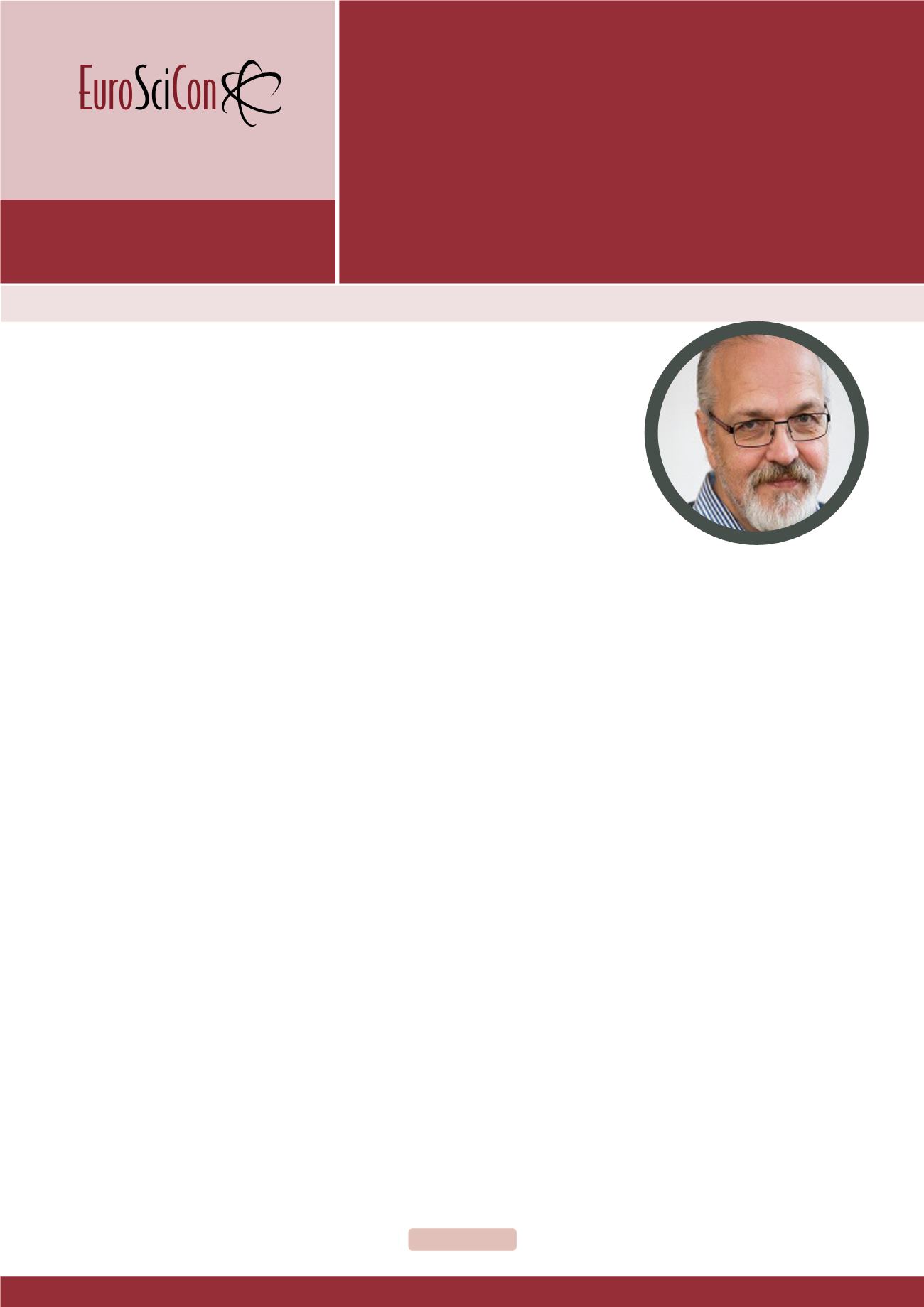

I n t e r n a t i o n a l C o n f e r e n c e o n
Metal, Mining and
Magnetic Materials
Journal of Material Sciences
ISSN: 2321-6212
N o v e m b e r 0 1 - 0 2 , 2 0 1 8
P a r i s , F r a n c e
Metal and Magnetism 2018
Page 35
S
everal research groups in USA, Turkey and Russia recently demonstrated the
principal feasibility of magnetic levitational bioassembly of tissue engineered
constructs from living tissue spheroids in the presence of paramagnetic medium.
However, employed paramagnetic medium containing Gadolinium is relatively
toxic at concentration enabling magnetic levitation. Using high magnetic field at
the European high field magnet laboratory (HFML) at Nijmegen, The Netherland,
it was possible first time to perform magnetic levitational assembly of tissue
constructs from tissue spheroids biofabricated from osteosarcoma cells at 100
times lower concentration of Gadolinium. High magnetic field in this situation
works as a temporal and removal support or scaffield. The magnetic levitation can
serve as a Earth basedmodel of spacemicrogravity. Thus, formative biofabrication
of tissue engineered constructs from tissue spheroids in the high magnetic field is
a promising research direction
Biography
Vladimir Mironov has completed his MD from The Ivanovo
State Medical Institute in 1977, PhD in 1980 from The Moscow
Pirogov State Medical Institute and Post-doctoral studies from
TheMax Planck Institute for Psychiatry inMartinsried, Germany
and fromMedical University of South Carolina, Charleston, USA.
He was a Director of the first Advanced Tissue Biofabrication
Center in USA. He is now a Chief Scientific Officer of company
3D Bioprinting Solutions. He is a world recognized pioneer of
organ printing technology. His company developed a first
Russian commercial 3D bioprinter Fabion and then bioprinted
a world first functional and vascularized organ – mouse thyroid
gland construct.
vladimir.mironov54@gmail.comFormative biofabrication using magnetic
levitation
Vladimir Mironov
3D Bioprinting Solution, Russia
I M Sechenov First Moscow Medical University, Russia
Vladimir Mironov, J Mat. Sci. 2018, Volume:6
DOI: 10.4172/2321-6212-C7-031
















